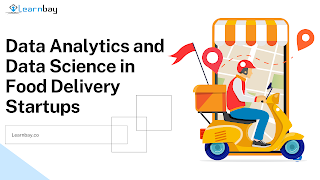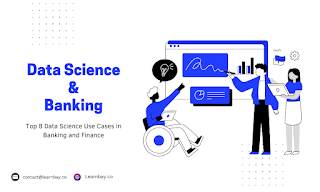8 Fascinating Applications of Data Science in Retail
By offering fact-based, data-driven insights, data science has emerged as one of the most powerful technologies in the retail industry. Retailers may improve their operations, financial performance, and marketing tactics using data science tools. Retailers today are looking for ways to glean more operational and consumer knowledge from their voluminous datasets, a demand currently met by Data Science solutions. Not only in retail but data science solutions are also being utilized by many other industries including healthcare, DevOps, finance, etc. You can check out the data science course in Bangalore to learn more about these cutting-edge data science and analytics techniques.
Uses of Data Science in Retail
Here are the potential ways data science is transforming the retail industry:
Product assortments based on customer behavior
Sales rise as customers purchase additional products in addition to their essential purchases. As a result, retailers can increase merchandising and sales through cross- and up-selling. Groups of customers purchase products.
Retailers must examine the types of products purchased in combination to improve their merchandising, raise their sales, and keep their customers. So, obtaining the frequency of purchases and comprehending the relationships between the products is crucial. Data science approaches make it very easy and visually appealing to determine the frequency of purchases and associations.
A data mining and data analysis technique is market basket analysis, also known as affinity analysis. It is one of the greatest strategies used by retailers to identify links between co-occurring customer behaviors.
The basis of market basket analysis is the frequency count and correlation check premise. Consequently, this enables us to understand the connections between the goods that clients choose to buy. A correlation test also assesses the link between two or more variables. Correlation analysis can be done in various ways, including using Pearson correlation and Spearman correlation.
Personalized Product recommendations and advertising
Recommendation engines are made using data science, and they have been quite useful for merchants as tools for forecasting consumer behavior. One of the finest ways retailers can study customer preferences is to use recommendation engines.
Retailers may boost sales and create fresh trends by offering advice. Depending on the decisions made by the clients, recommendation engines can change. The filtering methods used by recommendation engines offer insights by considering previous client behavior or a number of product attributes.
Logistics and Supply Chain Management
Companies frequently need help with the best ways to transport their assets and goods from one location to another. There are other factors to consider, including changing demand, human error, traffic, fuel prices, and weather. With the development of technology, it is now possible to evaluate the everyday data collected to derive relevant insights that may be used to influence business decisions.
Advanced mathematics can now be used thanks to data science, giving us the knowledge we need to maximize asset returns in the most effective way possible. Predictive logistic analytics helps forecast human behavior, machine behavior, and even weather behavior.
Less mechanical downtime, more effective routes, more customer happiness, and higher stock prices are all benefits that businesses experience when they integrate predictive analytics into their logistical operation. Want to become a data scientist in the supply chain? Sign up for a data science certification course in Bangalore, offered by Learnbay, and work as a competent data scientist in supply chain firms.
Demand Forecasting
Consumer demand for products or services can be forecasted through demand forecasting. Retailers can maintain the stock as needed using the information on how demand will vary. By forecasting demand correctly, a corporation can become more competitive in the market across all industries, including manufacturing, supply, and retail.
Data science offers a wide range of analysis tools to model consumer demand, from conventional statistical methods to neural networks and data mining. Times Series Analysis is regarded as one of the greatest methods for demand forecasting, making it one of the most effective Data Science methodologies.
This method makes the most accurate forecasts by allowing us to recognize trends, seasonality, and unpredictability in the data.
Price Optimization for products
Retailers can pick the optimal price for the goods to make the most money using price optimization tools. For retailers to maximize their product pricing, factors including competition, market positioning, production costs, distribution expenses, etc., play a crucial influence.
Machine learning (ML) approaches offered by data science significantly impact KPIs. The developed algorithms don't need to be explicitly programmed; they can learn patterns from data. Machine learning models can incorporate fresh data and continuously identify developing patterns or needs.
Retailers profit from predictive models because they can use them to choose the ideal price for each good or service, making this the most effective method for product price optimization.
Predictive Maintenance
The industrial sector frequently meets brand-new obstacles. Since they can fail anytime, manufacturing businesses have introduced preventive maintenance, routine inspections, and technician-performed equipment maintenance.
By using data science methods, regression models are applied to estimate the machinery's remaining lifespan. Failure within a specific time span is predicted using classification models. Over time, the failure probability is predicted by survival models. These models allow us to perform predictive maintenance, which aids in monitoring equipment, and the early detection of quality problems and asset failures so that they can be rapidly remedied and demand and supply in the retail sector are balanced.
Churn prediction
Customer attrition is one of the most significant factors in a company's success and expansion. When customers discontinue or end their association with a business or its goods and services, this is known as customer churn.
Because it costs more to acquire a new customer than to keep an existing one, businesses are keen to discover specific subsets of these clients. For instance, Big Bazaar may actively engage a group of consumers who were at risk of leaving with special offers rather than just losing them.
Data Science provides ML techniques that could help to predict the churn rate. The created algorithms can anticipate individual turnover rates and learn patterns from individual data.
Product Management
Customer Acquisition Cost (CAC), Customer Conversion Rate (CCR), User Churn (UC), Net Promoter Score (NPS), Customer Satisfaction (CSAT), Customer Lifetime Value (CLV), etc., are some of the parameters included in data-driven product management. The calculation of each of these factors makes use of specific historical data. An organization can perform target marketing and keep each client informed about the products by computing the values for each parameter for each individual customer.
Machine learning algorithms, which can be trained on consumer data and learn all the patterns and rules to calculate all the parameters in product management in an automated fashion, aid enterprises by offering faster and better outcomes.
Conclusion
Data science plays a crucial role in retail analytics by offering insights on inventory levels, supply chain activity, customer demand, sales, etc, that aid in marketing and procurement decisions. All in all, retail analytics provides in-depth customer insights into the organization's business and operational processes, including areas for expansion and areas in need of improvement. Enroll in IBM-certified data science courses in Bangalore and reshape your career as a skilled data scientist.

.png)


Comments
Post a Comment